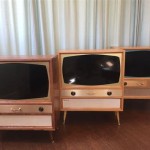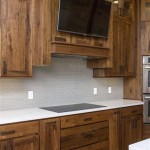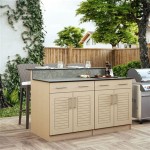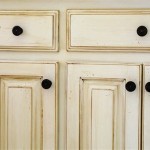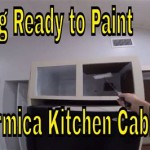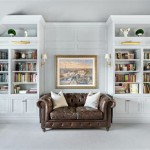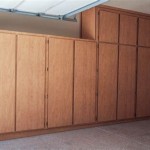Cabinets Charlotte NC: The Perfect Addition To Your Homeschool
Homeschooling offers a customized educational experience, allowing families to tailor learning to their children's individual needs and interests. However, establishing a functional and organized learning environment within the home is crucial for success. Cabinets play a vital role in creating this optimal space, providing storage, organization, and a dedicated area for learning materials. In Charlotte, NC, a variety of cabinet options are available to transform a designated homeschool area into an effective and enjoyable learning environment.
The selection of cabinets for a homeschool space is not merely an aesthetic decision; it is an investment in the learning process itself. Well-designed and strategically placed cabinets contribute to a focused and clutter-free environment, minimizing distractions and promoting concentration. They provide a dedicated home for textbooks, art supplies, science equipment, and other essential resources, ensuring that materials are readily accessible when needed but neatly stored away when not in use.
Optimizing Space with Strategic Cabinet Placement
Successful integration of cabinets into a homeschool setting begins with careful consideration of the available space and the specific needs of the curriculum. Begin by assessing the dimensions of the designated area, whether it's a dedicated room, a corner of the living room, or a part of the kitchen. Next, consider the various activities that will take place in the space and the resources required for each.
Wall-mounted cabinets are particularly useful for maximizing floor space, especially in smaller homes or apartments. They can be installed at varying heights, allowing for flexible storage and display options. Higher cabinets can store less frequently used items, seasonal learning materials, or resources intended for older students. Lower cabinets can be easily accessible to younger children, providing them with independence in retrieving commonly used supplies like crayons, construction paper, and puzzles.
Base cabinets, positioned along the floor, offer a stable and sturdy platform for countertops that can serve as desks, workstations, or craft areas. Choosing base cabinets with drawers and adjustable shelves allows for customization to accommodate different types of materials. Drawers are ideal for organizing smaller items like pencils, markers, and scissors, while adjustable shelves can be configured to fit books of different sizes, binders, and larger equipment.
Corner cabinets can efficiently utilize awkward or underutilized areas of the room. Lazy Susan or rotating shelves inside corner cabinets provide easy access to items stored in the back, making them ideal for storing art supplies or science materials that are used frequently. Tall pantry-style cabinets can provide ample storage for larger items such as maps, posters, or rolls of paper, effectively concealing them when not in use.
The arrangement of cabinets should be conducive to a natural workflow. For example, a reading nook could be enhanced with a combination of low bookshelves and a comfortable chair. A science area could be organized with cabinets that store beakers, test tubes, and other lab equipment, along with dedicated space for experiments and observations. An art area could benefit from cabinets specifically designed to hold paints, brushes, paper, and other supplies, keeping them organized and easily accessible.
Lighting is also an important consideration when planning cabinet placement. Ensure that cabinets do not obstruct natural light sources and consider incorporating under-cabinet lighting to illuminate work surfaces. Proper lighting reduces eye strain and enhances the overall learning environment.
Selecting the Right Cabinet Materials and Styles
Once the layout and placement of the cabinets have been determined, the next step is to choose the most appropriate materials and styles. The selection process requires considering factors such as durability, aesthetics, maintenance, and budget. Different materials offer varying levels of resistance to wear and tear, moisture, and stains, factors crucial for a high-use homeschool environment.
Solid wood cabinets offer timeless elegance and durability. They are available in a wide range of wood species, each with its unique grain pattern and color. Solid wood cabinets can be stained or painted to match any decor style and can withstand years of use. They are, however, generally more expensive than other cabinet materials.
Plywood cabinets offer a cost-effective alternative to solid wood. Plywood is constructed from multiple layers of wood veneer, glued together to create a strong and stable material. Plywood cabinets are less prone to warping or cracking than solid wood and can be finished with a variety of veneers or laminates to achieve different looks.
Medium-density fiberboard (MDF) cabinets are another affordable option. MDF is made from wood fibers, resin, and wax, pressed together under high pressure. MDF cabinets are smooth and uniform, making them ideal for painting. However, they are less resistant to moisture than solid wood or plywood and may require additional protection in damp environments.
Laminate cabinets offer exceptional durability and ease of maintenance. Laminate is a thin layer of plastic or paper adhered to a substrate, such as plywood or MDF. Laminate cabinets are available in a wide range of colors, patterns, and textures, including wood grain imitations. They are resistant to scratches, stains, and moisture, making them an excellent choice for a busy homeschool environment.
The style of the cabinets should complement the overall aesthetic of the home. Traditional cabinets often feature raised panel doors, decorative moldings, and ornate hardware. Contemporary cabinets typically have clean lines, flat panel doors, and minimalist hardware. Shaker-style cabinets offer a versatile and timeless look that works well in both traditional and modern settings.
Hardware, such as knobs and pulls, can also significantly impact the overall look of the cabinets. Choose hardware that is both functional and visually appealing. Consider the comfort and ease of use, especially for younger children.
Color plays a crucial role in creating a positive and stimulating learning environment. Neutral colors, such as white, gray, and beige, are versatile and can be easily paired with other colors. Bright colors, such as yellow, blue, and green, can add energy and excitement to the space. Consider incorporating pops of color through accessories, such as artwork, cushions, and storage containers.
Enhancing Functionality with Custom Cabinet Accessories
The internal organization of cabinets can be further enhanced with a variety of custom accessories. These accessories maximize space utilization, improve accessibility, and streamline the learning process. Installing these accessories allows for a personalized system that caters to the needs of the homeschool curriculum and the learning style of the students.
Pull-out shelves provide easy access to items stored in the back of deep cabinets. They are particularly useful for storing heavy textbooks or large art supplies. Pull-out shelves can be customized with dividers or compartments to keep items organized and prevent them from shifting during use.
Drawer organizers help to keep drawers tidy and prevent clutter. They are available in a variety of sizes and configurations, designed to hold pencils, pens, markers, scissors, and other small items. Drawer organizers can be made from plastic, wood, or metal and can be easily removed for cleaning.
Vertical dividers are ideal for storing trays, baking sheets, or large pieces of construction paper. They keep these items upright and prevent them from bending or warping. Vertical dividers can be installed in cabinets or drawers, providing a convenient and space-saving storage solution.
Pegboards offer a versatile and customizable storage option for art supplies or small tools. Pegboards can be mounted on the inside of cabinet doors or on the wall. Peg hooks can be used to hang brushes, scissors, paint bottles, and other items, keeping them easily accessible and organized.
Roll-out trash cans provide a convenient and hygienic way to dispose of waste. They are typically installed in a base cabinet and can be easily pulled out for use. Roll-out trash cans are available in a variety of sizes and configurations, including models with separate compartments for recycling and composting.
Charging stations can be integrated into cabinets to keep electronic devices organized and readily accessible. These stations typically include multiple outlets and USB ports for charging smartphones, tablets, laptops, and other devices. Charging stations can be hidden inside cabinets or mounted on the wall.
Whiteboards or corkboards can be incorporated into cabinet doors or side panels to provide a dedicated space for writing notes, displaying artwork, or posting schedules. These boards can be easily wiped clean or updated as needed.
Incorporating these custom cabinet accessories can significantly enhance the functionality and organization of a homeschool space. By tailoring the storage solutions to the specific needs of the curriculum and the learners, families can create a more efficient and enjoyable learning environment.

Simple Homeschool Room Ideas For Organizing Your Space A Humble Place

Homeschool Organization Ideas When You Don T Have A Room Our Cooper Nest

Loving Your Homeschool Space Advice From 6 Veteran Homeschoolers Compass

Homeschool Room Organizing Tools

Organizing Your Homeschool In Small Spaces Meet Penny

Loving Your Homeschool Space Advice From 6 Veteran Homeschoolers Compass

36 Amazing Homeschool Room Ideas That Encourage Learning

The Ultimate List Of Homeschool Room Ideas Organization Al Memory

8 Homeschool Room Ideas To Create An Inspiring Learning Environment

Simple Homeschool Organization In A Small Space This Yellow Farmhouse
Related Posts

